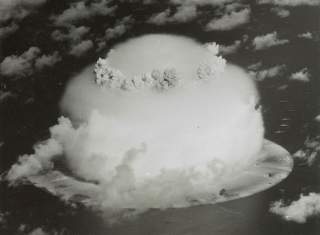How the Warsaw Pact and NATO Nearly Blew Each Other (And the World) to Smithereens
Billions would have died.
Petr Lunak goes further in dismissing the plan as a “fairy tale.” Beyond being ambitious in its objectives, the plan is downright crazy because it envisions the Soviet and Warsaw Pact soldiers fighting in territory that had just been destroyed by massive nuclear attacks. These areas would have been highly radioactive. As Lunak points out, “They (the Soviets) really planned to send ground troops out in the field and have them fight for a few days until they died from radiation.”
It’s questionable whether these soldiers would have been willing to conduct these suicide operations. Regardless of their commitment to communism or the Warsaw Pact, the territory they would have been fighting to conquer would have been all but useless, its major economic and military centers destroyed.
Accordingly, these countries would not longer pose any conceivable military threat to what was left of the Soviet Union and its allies. Furthermore, there would be little to gain economically from conquering these lands, given the enormous devastation. In fact, much of it would have been uninhabitable for some time.
As Dwight Eisenhower—who is often mischaracterized as believing that nuclear weapons were just another weapon to be used—realized early on in the atomic age, a nuclear war is unwinnable. At one National Security Council meeting, for example, Eisenhower said that “one thing he was dead sure [of]: No one was going to be the winner in such a nuclear war. The destruction might be such that we might have ultimately to go back to bows and arrows.” By the end of his presidency he had grown so gloomy as to declare that if war occurs, “You might as well go out and shoot everyone you see and then shoot yourself."
The Soviet Union evidently planned to do just that.
This first appeared in 2015 and is being reposted due to reader interest.
Image: Reuters

